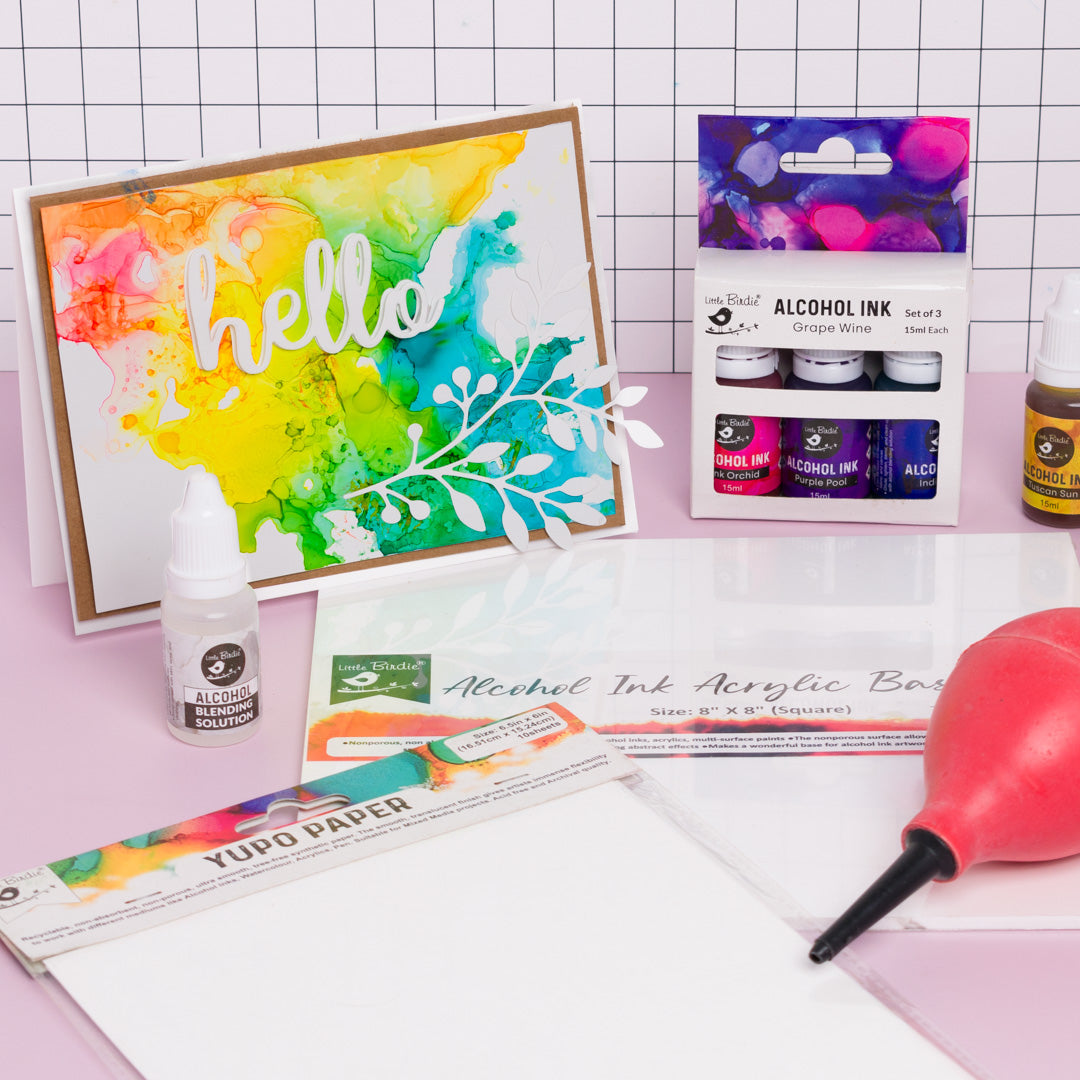Alcohol inks are fast-drying, highly pigmented, alcohol-based dyes known for their vibrant colors and fluidity. They are primarily used on non-porous surfaces, allowing artists to create dynamic and visually striking artworks.

Products Required
1. Alcohol Inks
- Available in various colors and finishes (metallic, pearlescent, etc.).
3. Non-Porous Surfaces
Alcohol inks work best on non-porous surfaces, which prevent the ink from being absorbed and allow for better manipulation. Common surfaces include:
- Yupo Paper – Synthetic, water-resistant paper best for alcohol ink art.
- Ceramic Tiles – Great for making coasters and decorative pieces.
- Glass & Acrylic Sheets – For transparent, stained-glass effects.
- Metal Sheets – Adds a unique, reflective base for designs.
4. Application Tools
- Droppers/Pipettes – For controlled ink application.
- Brushes – Used for detailed designs (preferably synthetic brushes).
- Blower / Air Duster / Straw – Helps move the ink across the surface.
- Palette Knives / Plastic Cards – For scraping techniques.
5. Protective Gear
- Gloves – To prevent stains on hands.
- Mask – To reduce exposure to fumes.
- Apron/Table Cover – To protect clothing and workspace.
6. Finishing Products
- Resin / Varnish / Spray Sealer – To seal and protect finished artwork.
Suitable Surfaces: Alcohol inks work best on non-porous surfaces, which prevent the ink from being absorbed and allow for better manipulation. Common surfaces include:
Basic Techniques:
- Direct Application: Apply drops of alcohol ink directly onto your chosen surface. Tilt or blow on the surface to spread the ink and create abstract patterns.
- Blending: Use a blending solution or isopropyl alcohol to dilute inks, lighten colors, or blend multiple hues seamlessly.
- Brush Painting: While less common due to the ink's fluidity, brushes can add detailed designs or controlled strokes.
- Air Manipulation: Use tools like straws, air dusters, or hairdryers to blow the ink, forming unique textures and effects.
- Masking: Apply masking fluid or tape to protect areas of the surface, ensuring they remain untouched when ink is applied.
Applications:
- Abstract Art: Create free-flowing designs emphasizing color interplay and organic shapes.
- Decorative Items: Enhance household items like vases, mugs, or tiles with custom designs.
- Jewelry Making: Design unique pendants, earrings, or bracelets by applying inks to metal or resin bases.
- Card Making: Craft personalized greeting cards with vibrant backgrounds or intricate designs.
- Mixed Media Art: Incorporate alcohol inks into broader art projects, combining them with other mediums for diverse effects.
Safety Tips:
- Ventilation: Always work in a well-ventilated area to avoid inhaling fumes.
- Protective Gear: Wear gloves to prevent skin contact and consider using a mask if you're sensitive to odors.
- Surface Protection: Cover your workspace to guard against stains, as alcohol inks can be challenging to remove once dried.











